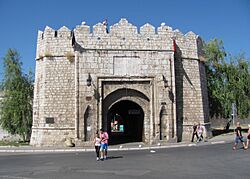List of cities in Serbia facts for kids
Serbia has many interesting places, from big cities to smaller towns and villages. This article lists the main cities and towns in Serbia. The way a place is called a "city" or "rural" (meaning countryside) depends on rules set by the Statistical Office of the Republic of Serbia. These rules look at more than just how many people live there. They also consider other official and legal things.
Contents
What Makes a City in Serbia?
Administrative Cities
In Serbia, a "city" is a special type of place defined by law. Usually, a city has more than 100,000 people. Cities are similar to municipalities, but they have more freedom to govern themselves. They have their own local parliaments and leaders. The main leader of a city is called a mayor (in Serbian, gradonačelnik). Citizens vote for their mayor in local elections. There are 29 official cities in Serbia, and each one has its own assembly and budget.
A city's area includes the main town and the villages around it. For example, the City of Subotica includes the town of Subotica and its nearby villages. The capital city, Belgrade, is unique because it's like a whole district on its own. Other cities are part of a larger district.
City Municipalities
Some big cities in Serbia are divided into smaller parts called city municipalities. Five cities have these smaller parts: Belgrade, Niš, Požarevac, Vranje, and Užice. These city municipalities also have their own local assemblies and responsibilities. The largest city municipality by population is New Belgrade, with over 214,506 people.
For a while, the city of Kragujevac also had city municipalities, but they were removed in 2008. Novi Sad used to have them too, but they were officially removed in 2019. In 2013, a new city municipality called Sevojno was created within the city of Užice.
Official Cities of Serbia
Here is a list of the cities that have official administrative city rights in Serbia:
 Belgrade
Belgrade Bor
Bor Čačak
Čačak Jagodina
Jagodina Kikinda
Kikinda Kraljevo
Kraljevo Kragujevac
Kragujevac Kruševac
Kruševac Leskovac
Leskovac Loznica
Loznica Novi Pazar
Novi Pazar Novi Sad
Novi Sad Niš
Niš Pančevo
Pančevo Pirot
Pirot Požarevac
Požarevac Prokuplje
Prokuplje Smederevo
Smederevo Sombor
Sombor Sremska Mitrovica
Sremska Mitrovica Subotica
Subotica Šabac
Šabac Užice
Užice Valjevo
Valjevo Vranje
Vranje Vršac
Vršac Zaječar
Zaječar Zrenjanin
Zrenjanin
Major Cities and Their Populations
This table shows some of the largest cities and their populations, based on the 2011 and 2022 census data. The population numbers for cities include the main urban area.
| Coat of arms | City/Town | District
Okrug |
Population (city per census) | Landmark | |
|---|---|---|---|---|---|
| 2011 | 2022 | ||||
 |
Belgrade
Београд |
Belgrade | 1,166,763 | 1,197,714 | |
 |
Novi Sad
Нови Сад |
South Bačka | 250,439 | 280,763 | |
 |
Niš
Ниш |
Nišava | 183,164 | 182,797 | |
 |
Kragujevac
Крагујевац |
Šumadija | 150,835 | 146,315 | |
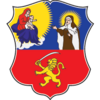 |
Subotica
Суботица |
North Bačka | 105,681 | 94,228 | |
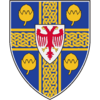 |
Leskovac
Лесковац |
Jablanica | 60,246 | 58,338 | |
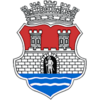 |
Pančevo
Панчево |
South Banat | 76,203 | 86,408 | |
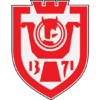 |
Kruševac
Крушевац |
Rasina | 73,316 | 68,119 | |
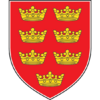 |
Kraljevo
Краљево |
Raška | 64,175 | 61,490 | |
 |
Novi Pazar
Нови Пазар |
Raška | 66,527 | 71,462 | |
There are many other towns and municipalities across Serbia, each with its own unique history and features. The Statistical Office of the Republic of Serbia uses specific rules to decide if a place is "urban" (like a city or town) or "rural" (like a village). These rules consider things like how many people work in farming and how densely populated an area is, not just its size.
See also
- Administrative divisions of Serbia
- Districts of Serbia
- Municipalities and cities of Serbia
- Populated places in Serbia




